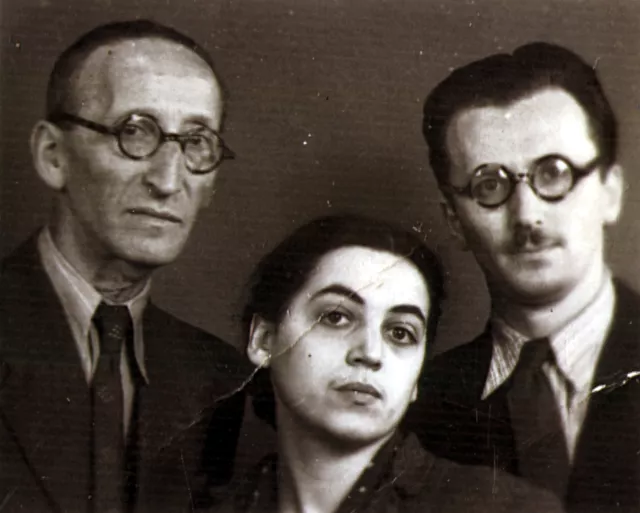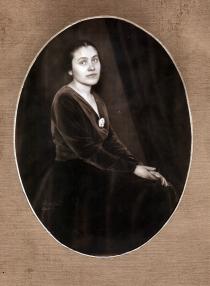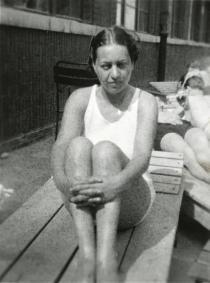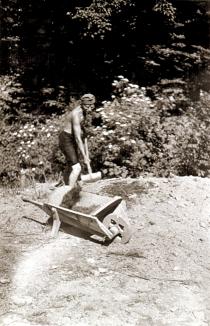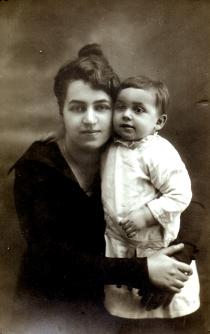Me with my first husband and his father. We had to have this photo made to show that we lived together. We needed this for some war paper.
I met my first husband, Gyorgy Tibor, at the Conservatory, when I attended it. He had already graduated at that time as a violinist. We got married in secret in 1943, because my parents wouldn't agree, because he didn't make a living; he was in forced labor service. Even his father didn't know, because he wanted his son to be a world-renowned violin soloist, and an early marriage would tie him down immediately to weekdays. But it came to light, and then we rented a room. I gave Latin lessons, and earned a lot; I had about 20 pupils, while my husband was playing the violin in the Orchestra of Budapest. As a Jew he couldn't be a regular member, he could only work on a per diem basis, but he managed it well. He was busy almost every day.
[In 1944 when Jews were moved to yellow-star houses] Rozsa Street 48 became a Jewish house (I lived with my parents in Rozsa Street 50). We had to move into a terrible flat overlooking the courtyard, and from there I had to go out to the KISOSZ-ground, and from there to the brick factory. Wallenberg came there, and we got a Swedish free pass [so I could get out]. We founded the Swedish protected houses in St. Istvan park in November 1944. I ran home to get my parents to come there. We even managed to get my husband out of the forced labor service in November '44. He was in a terrible condition, and I told him, 'Now you lie down, and don't move even if the walls fall in, because you are very sick.' One of our relatives enticed my mother away to the next street telling her that that protected house would be better. My husband Gyorgy and I remained in St. Istvan park until the end.
Kati Andai with her first husband Gyorgy Tibor and his father Geza Tibor
Share
Photos from this interviewee
The Centropa Collection at USHMM
The Centropa archive has been acquired by the United States Holocaust Memorial Museum in Washington, DC.
USHMM will soon offer a Special Collections page for Centropa.
Academics please note: USHMM can provide you with original language word-for-word transcripts and high resolution photographs. All publications should be credited: "From the Centropa Collection at the United States Memorial Museum in Washington, DC". Please contact collection [at] centropa.org.

